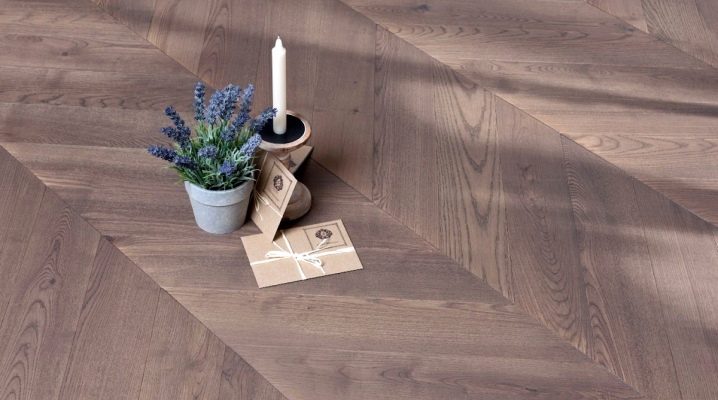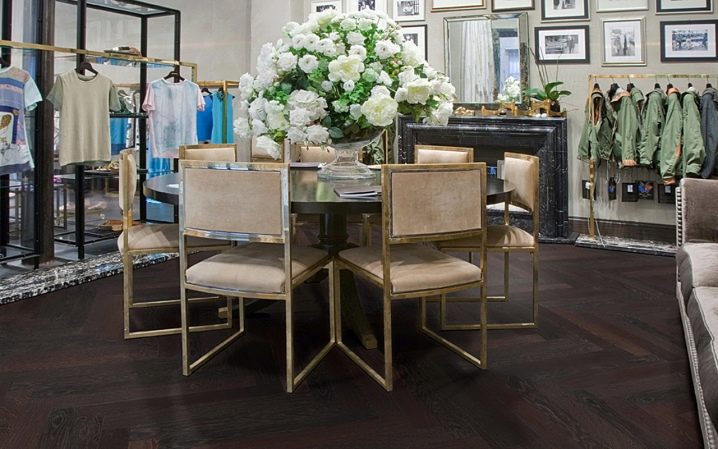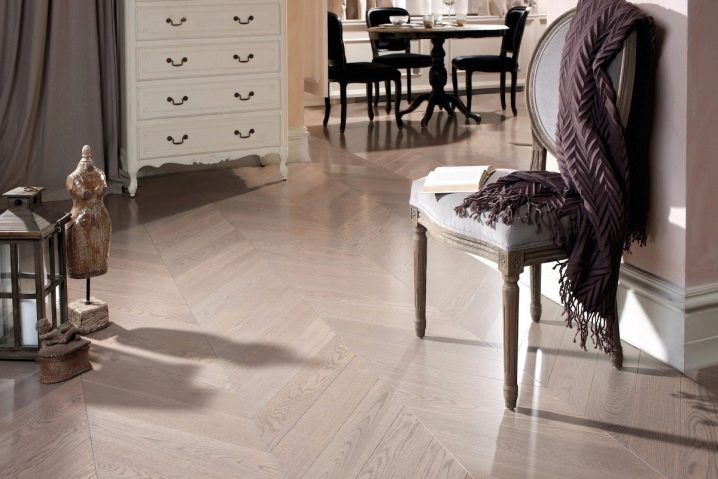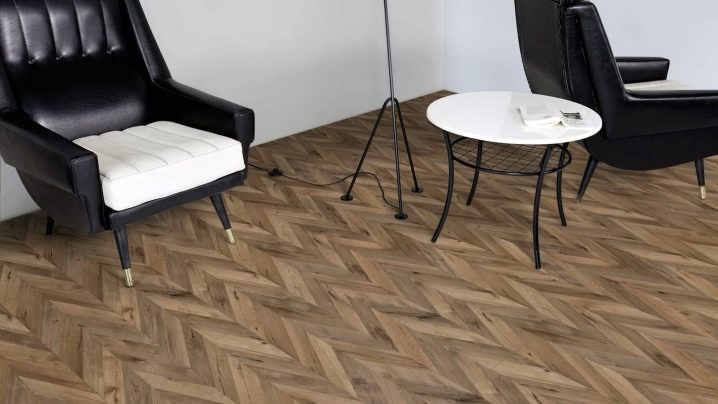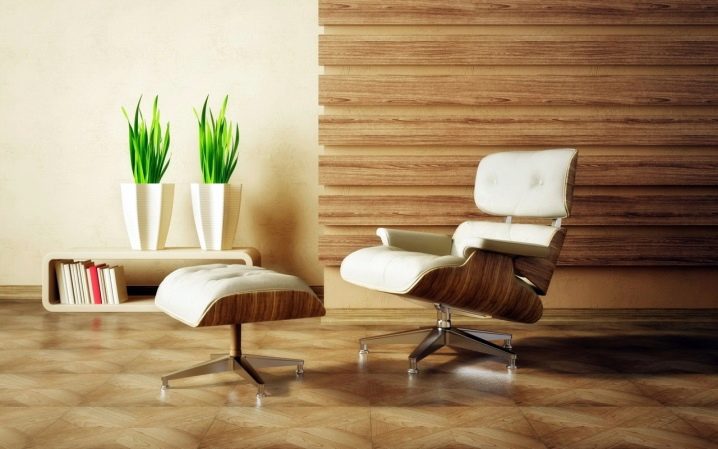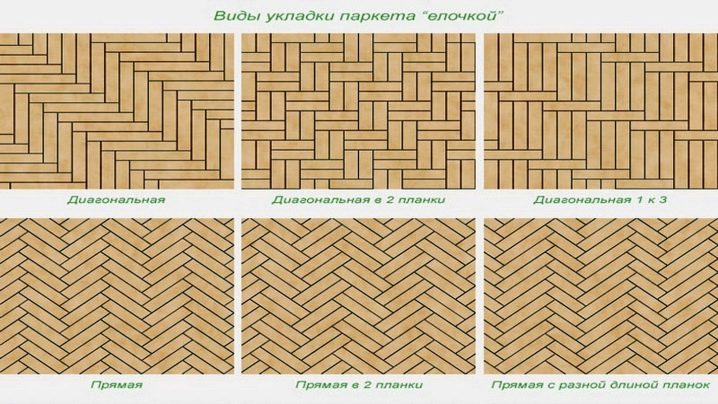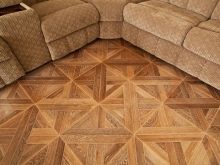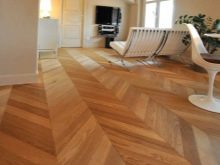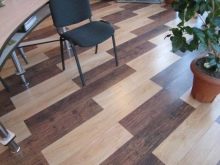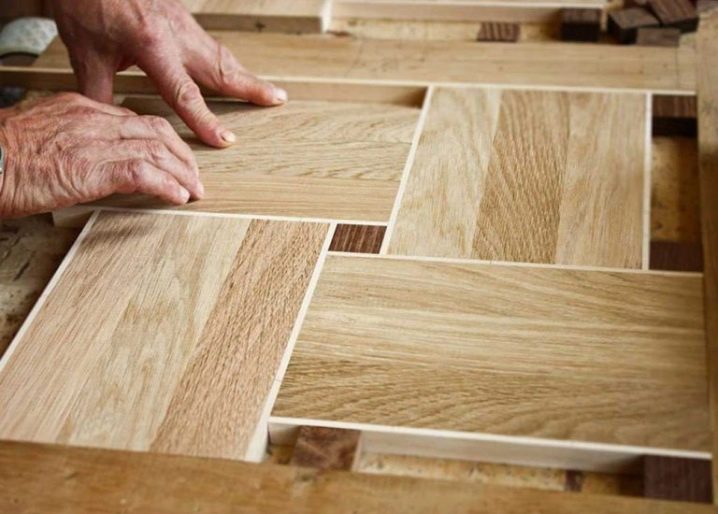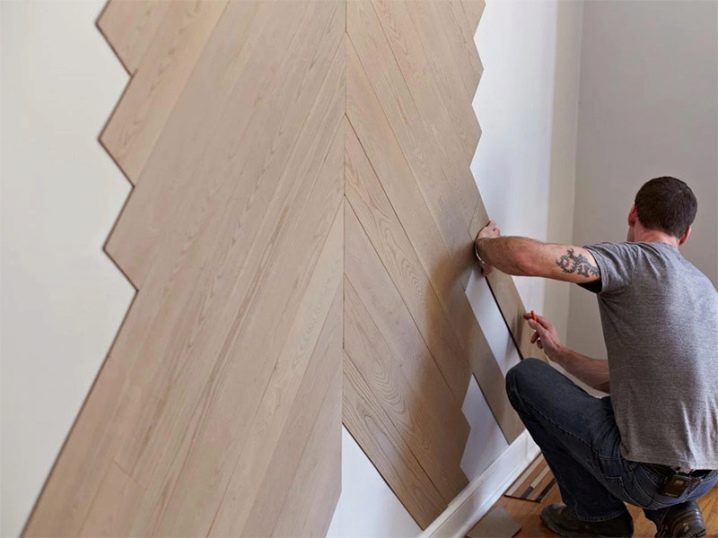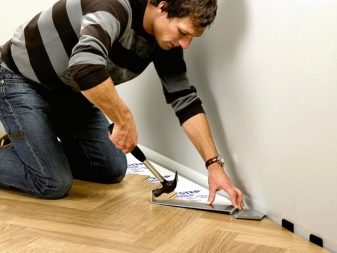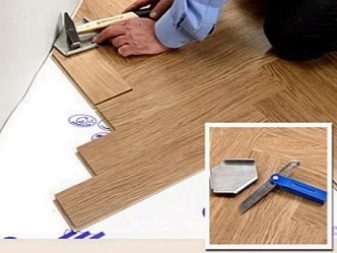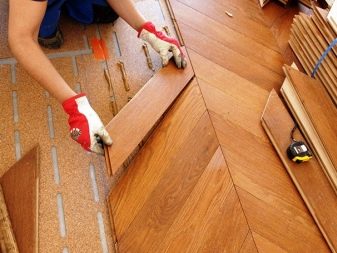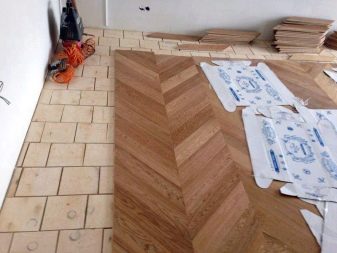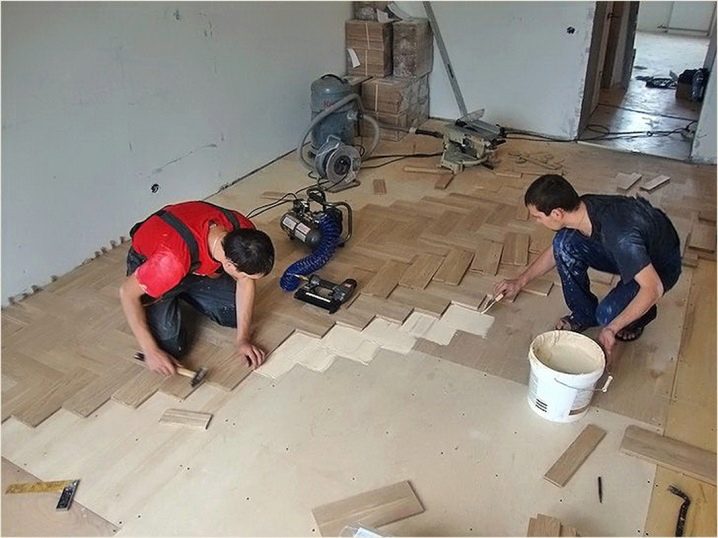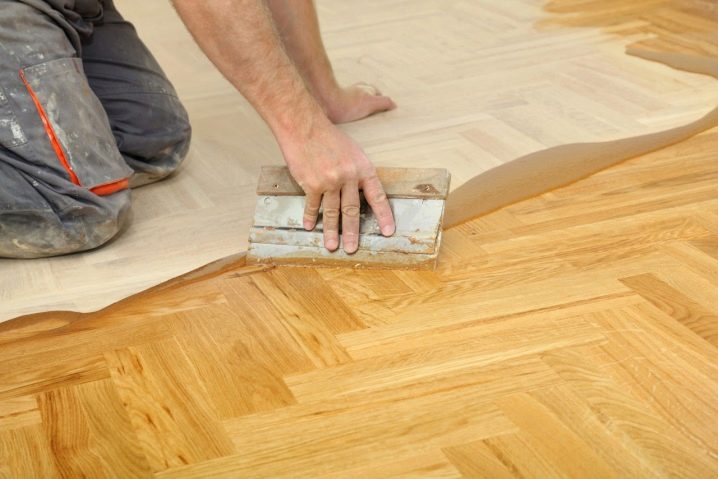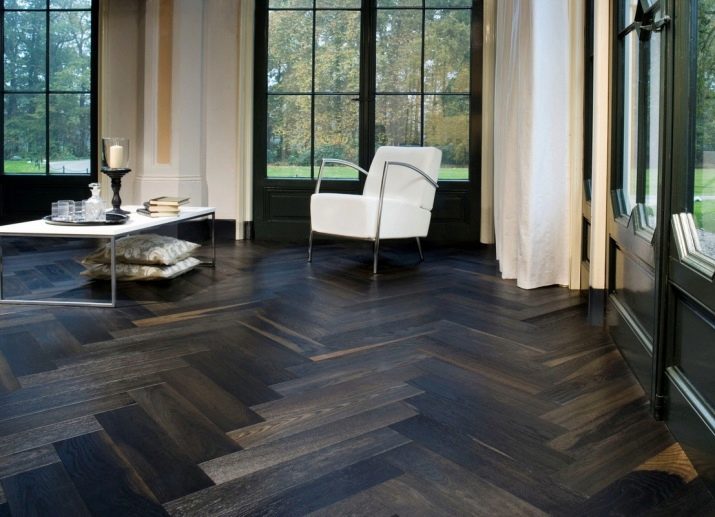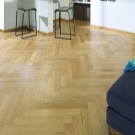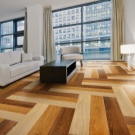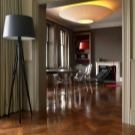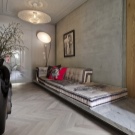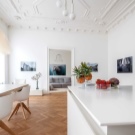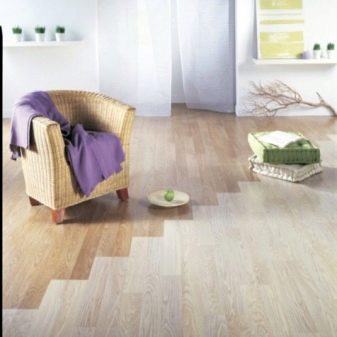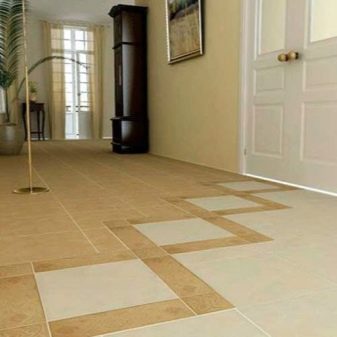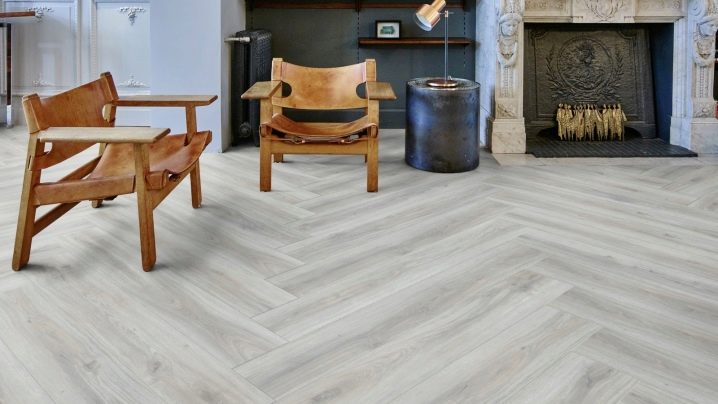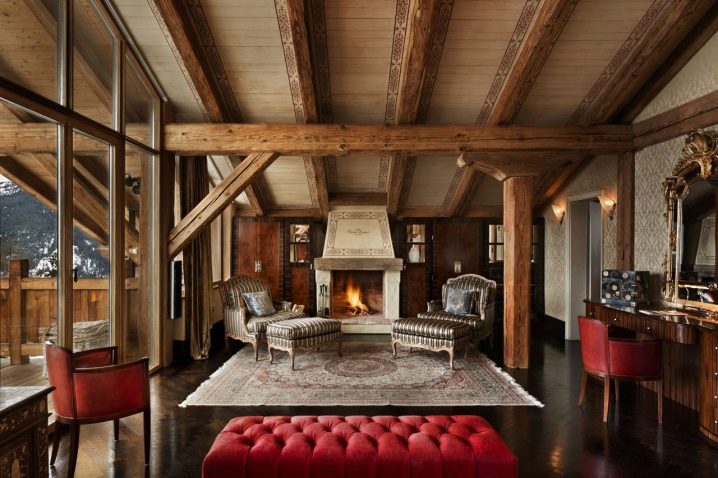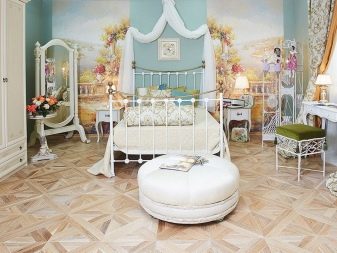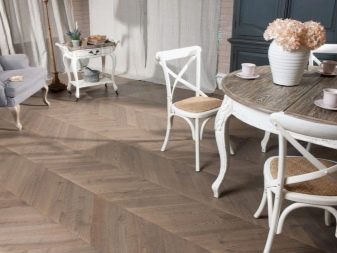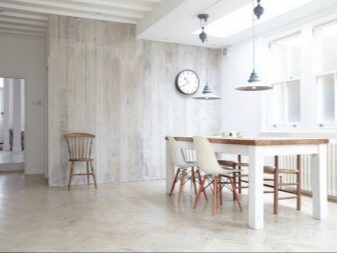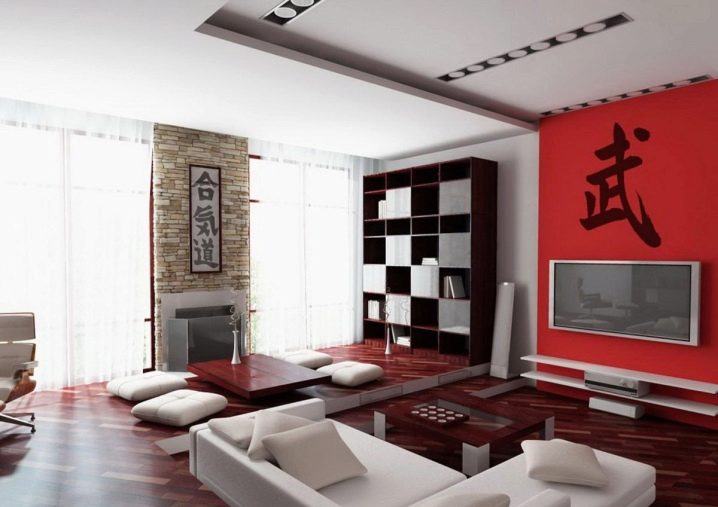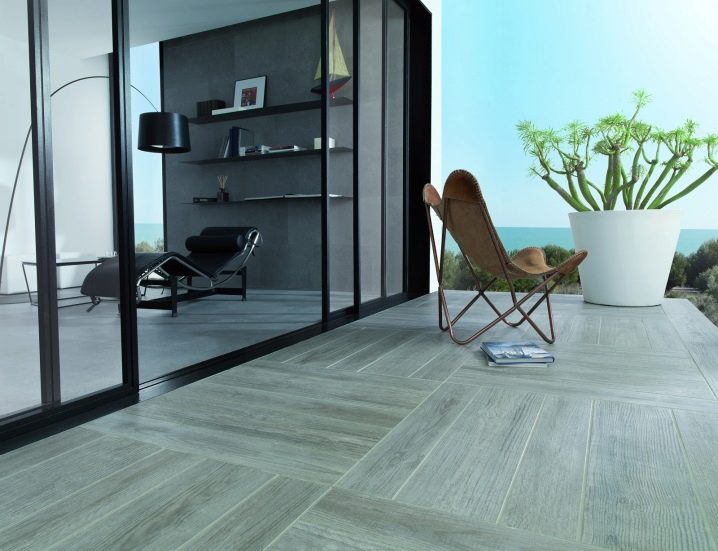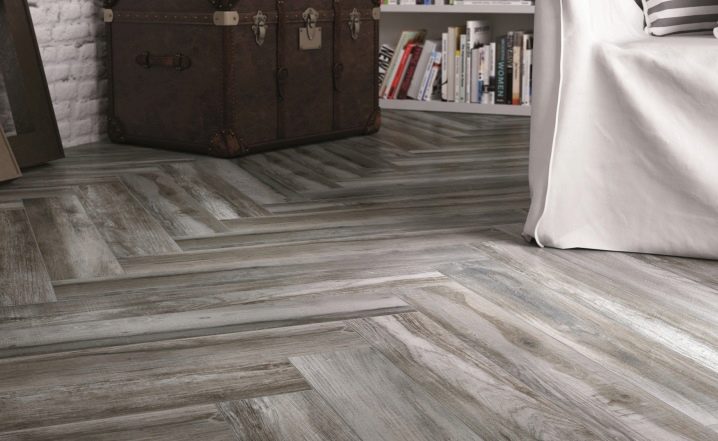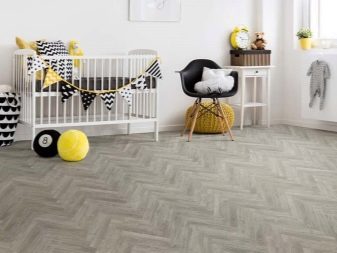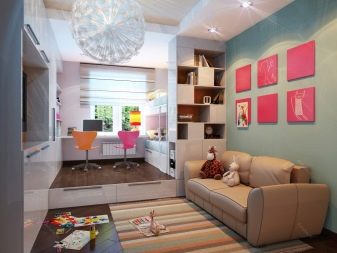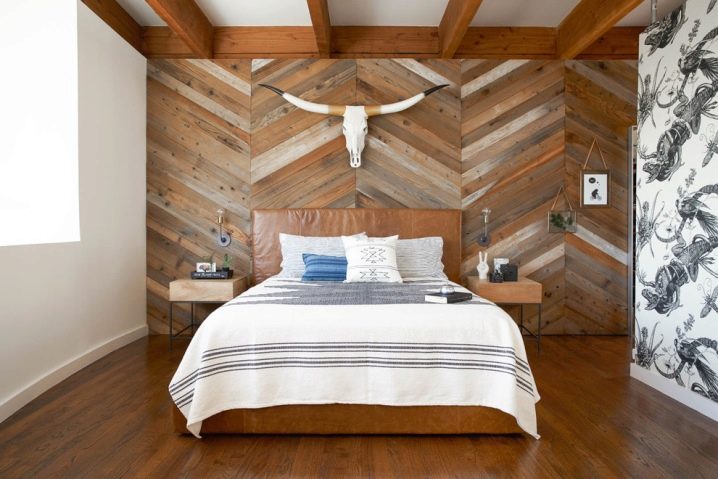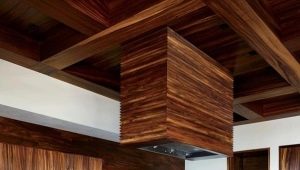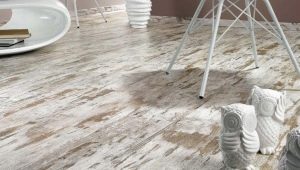Herringbone laminate in the interior
In order to create a harmonious interior, you need to pay special attention to the design of the floor. Laminate flooring is a flooring that has good technical and quality characteristics and an interesting appearance. Moreover, the laminated board is an excellent alternative to natural parquet. One of the most common options for laying laminate recognized laying “herringbone”, but it is important to know how to properly use such a design move in the interior.
Special features
Not every laminate can be laid in such a way that the coating has a “Christmas tree” pattern, since not every manufacturer produces models that imply such a laying method. When choosing a laminate for laying "Christmas tree" it is important to pay attention to the method of attachment. The main feature of a suitable type of coating is that there are locks on all four sides, and not on two.This is due to the fact that so the laminate becomes more versatile, and it can be turned over and combined to create the perfect ornament.
All laminated boards must have the same size and coating in order for the design to look harmonious. Another feature of laying a laminate floor in the form of a “Christmas tree” is that before this it is important to carefully plan this process. Keep in mind that since you have to dock the drawing, it will still be necessary to cut the laminate later. On average, about 17% of the total coverage area is lost on pruning, so for laying this laminate you need to purchase it with a margin.
The cut particles of the boards cannot be used, because they will not be possible to dock, and will have to be disposed of.
Types of laminate
The first type of laminate with a herringbone pattern was a coating that assumed only one single laying technology. Thus, all the lamellae could be placed only in one docking direction, that is, no change in the herringbone pattern, step width and design of the entire coating was assumed - it had a standard appearance.
But now manufacturers offer a large number of types of such laminate with different lock joints. So, acquiring a separate functional element for fastening the laminate, you can lay it at your discretion, using a different grid step.
There is a laminate for laying a herringbone of several types.
- A. Such a model has locks fastening adjacent lamellae only on two longitudinal sides of the lamella, that is, they can only be joined parallel to each other.
- B. Models have a locking connection on two opposite short sides, just so they can be joined with each other.
- C. These are the most versatile quadrilateral slats, which allow you to give free rein to the imagination and put the picture at its discretion, showing ingenuity.
Models are also divided into types depending on their size and other external characteristics. You can choose a thin laminate width of 150 mm or wide panels under the “herringbone” with a thickness of 330 mm. The latter option is simpler in laying and joining the picture. The average width is 190 mm. Different manufacturers offer interesting models, combining the design, size and type of mounting slats.So, you can find standard lamellae of medium length with locking connections along the longitudinal side. They involve the manual laying of the picture and the independent docking.
Other manufacturers offer medium-sized models: you can turn the slats and connect them with a herringbone. More versatile and convenient are wide lamellas, which are often square in shape. They differ in large width and size. So, the “Christmas tree” pattern on them has already been simulated, and it remains only to fasten the panels to each other, without disturbing the order and the step. This option is the most popular and often bought, it can be laid independently, without assistance.
In addition, as a result of its layout, a minimum amount of waste is generated.
How to make a Christmas tree laying?
In order to make a drawing in the form of a “Christmas tree” on a laminate coating, it is necessary to correctly place all the elements. So, near each wall of the room in which the installation is planned, it is necessary to leave a distance of about 10 mm in reserve. If the area of the room is too large, then it is better to increase this distance to 15 mm.Laying in this case does not begin across the room, but in length, that is, starting from the upper edge of the longer wall. It is necessary to outline the line of the beginning of the flooring. On it you need to properly lay the edges of the slats, so that they lay in one conventional line "herringbone". In no case should the coating go beyond these lines.
When laying the coating in this style, be sure to observe the requirements of placing the slats at an angle of 90 degrees to each other. If there are doubts about the correctness of the work, it is better to make additional measurements and draw the lines of each row. When laying the lamella "herringbone" it is important that all boards have the same design and uniform structure. In addition, they must have the same temperature. If part of the lamellae was stored outside or in the courtyard, and some - in a warm room, then it is better to bring all the details of the coating into the house and leave them for acclimatization for 36 hours. Only after that you can start laying "herringbone".
Such actions must be carried out in order to ensure that the coating does not deform, and the drawing subsequently does not get off.
On how to lay the laminate "herringbone", see the following video.
When laying it is important to consider the location of the castle zones. It will depend on this step, location and direction of the "Christmas tree". Be sure from time to time to check if the drawing is not shifted to the side, if it is not going away obliquely, every three tiers check the accuracy of the measurements and the accuracy of the location. Laying should always begin along the wall from its beginning, and not from the middle of the room, otherwise there is a risk of losing a large number of slats.
The previously left gap is subsequently hidden by a special plinth, in addition, the plinth is able to give the interior of the room a complete look. At installation of a plinth it is necessary to fix only one side adjacent to the wall. Thus, the “freedom” of the coating is ensured and possible further deformation of the laminate is prevented.
Examples and options in the interior
Herringbone coating is a versatile and interesting option. So, the interior looks great as the French "tree" and the Hungarian. Laying laminate "herringbone" may have an unusual design - some prefer to finish the corners of the room in this way.Such a move in the interior looks fresh, allows you to place accents.
In addition, in modern studio apartments, herringbone laminate is often used for zoning rooms. Different functional areas can be distinguished by changing the direction of laying and the color of the laminate or leaving the herringbone pattern the same. In addition to the fact that this laminate allows you to transform the room, it also perfectly and concisely fits into it due to its versatility.
It can be put in any room, regardless of the design of its interior.
-
This cover will look great in a room furnished in style. country music. For its design, most often acquire models that most accurately convey the wood coating: laminate with a chamfer, embossed. Such a floor should resemble natural boards, in which case both darker and lighter variants are used, and even their combinations. Thus, you can create a variegated natural wooden floor that will look elegant. As a rule, it is complemented with wooden furniture and a fireplace in the living room.
-
Now some make out the rooms in the unusual direction of the Swiss chalet. It is a rustic style, which involves a combination of natural stone and wood, so in this case, the walls can be made with a coating under a decorative stone, in the same way, you can select the doorways, and the floor and ceiling can be covered with natural wood. It is the laminate, laid out "herringbone", perfectly complement and complete such interior design. As a rule, for this purpose, products are used in the most natural wood shades, for example, walnut or ash.
Laminate for this interior is usually purchased in darker and more mature colors.
-
Nowadays, laying the laminate "herringbone" in rooms decorated in the style of Provence An important difference between the flooring will be the fact that it often has an “aged” texture with artificial abrasions and vintage design, and in this case the laminate is purchased in light pastel colors. For such a paving fit uneven color interspersed with gray, beige, pale gray-brown. Models of color bleached oak will perfectly fit into this style direction. They perfectly complement the light elegant interior in the style of Provence.
-
Laying "Christmas tree" is used in the design of rooms in Japanese style, but in this case, acquire models that mimic bamboo. The choice of color here is not the main thing. First of all, attention is paid to the texture. It should be as natural as possible, like natural bamboo.
-
In the most modern style high tech You can also apply the technique of laying laminate "herringbone", but it is better if the lamellae are quite large, and the walking grid will also differ in its large size. To maintain this style, a laminate of black, gray or white color is acquired.
-
"Herringbone" put the floors and in rooms in gothic style, and here they use only dark, almost black laminate. The difference is that a suitable coating should have, as it were, a volumetric texture and glossy shine, which look very stylish and interesting.
In the interior of the nursery, they also often use a herringbone, in which case such a drawing, made on a laminate floor, is used for zoning. Choosing models with different colors and changing the direction of the “Christmas tree”, they divide the playing, sleeping and study areas in the child’s room.For the nursery, a drawing of lamellas, which have a dark design and a light chamfer, is perfect. This contrast looks bright, allows you to emphasize the ornament.
The layout "herringbone" in the interior is often used to make the room visually longer. This tactical move is popular, which is why the laminate is laid on a longer wall, thus “pulling” the space. "Herringbone" does not look good in narrow rooms, for example, in the hallway or in the hallway, which is why it is better to stack laminate in a similar way in living rooms, kitchens, bedrooms or children.
